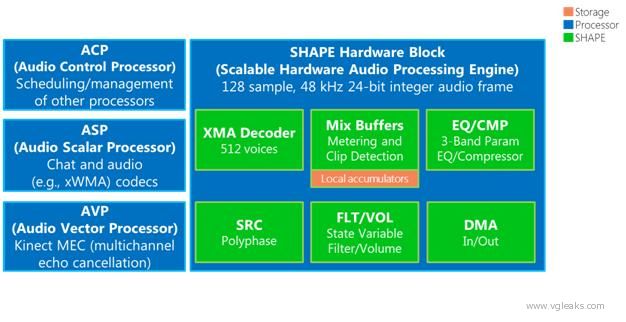I kept up to date with this thread last night up to about page 20, So got back at about 37 so missed a fair bit of reading, cheers

- I guess I will have to get a quick look back through.
Interested how we know "how powerful" both the ps4 + x1 chips are to compare them. -
edit: Xbox have highly customized their Jaguar cores which have separate chips to process the audio. Most of which is to handle the HDMI IN for the cable box etc, thats why it requires such a powerful custom chip.
As far as reading through what Mark cerny said :
Mark Cerny: "There's dedicated audio hardware. The principal thing that it does is that it compresses and decompresses audio streams, various formats. So some of that is for the games - you'll have many, many audio streams in MP3 or another format and the hardware will take care of that for you. Or, on the system side for example, audio chat - the compression and decompression of that." -
This will handle most of the general audio
The bit that seems to be causing the chit chat, as stating that standard audio needs to be done on the GPU, well I read it as its an ADDED bonus because of the "type" of audio its doings, since its INGAME interactively related.
The audio raycasting etc -
which surely cant be put in the same conversation as general sound audio:
Mark Cerny: So the GPU is a natural place to do a number of different types of audio processing. It really does come down though to the amount of parallelisation that is natural to perform for that algorithm, and that does vary greatly depending on what you are doing specifically in your audio processing. I think that as you go forward we will see a hybrid approach in a couple of years where certain aspects of the audio are being done on GPU.
Digital Foundry: Referring to your presentation you were talking about audio ray-casting... As I understand the idea, you're simulating what happens to soundwaves when they hit a particular material...
Mark Cerny: Actually the audio ray-casting I was talking about it much simpler. We'll cast rays to see if you can shoot something. You really need to know because it affects the reticule. It'll be a different colour if you can shoot an enemy or not shoot an enemy. For audio, you need to check whether you can hear a source or not. Many games cast a couple of hundred rays. It's actually quite time-consuming to do those calculations and it turns out to be a pretty natural fit for the GPU. You can take your couple of hundred rays, have them processed in bundles of 64 on the GPU and then the game designers get to make up new and more creative ways to use that ray-casting.
Conclusion: The ps4 is fully capable of doing most of its standard audio completely free of any CPU/GPU overheads, however if the game developers want to use special next gen audio features described above the GPU is available for that compute.


